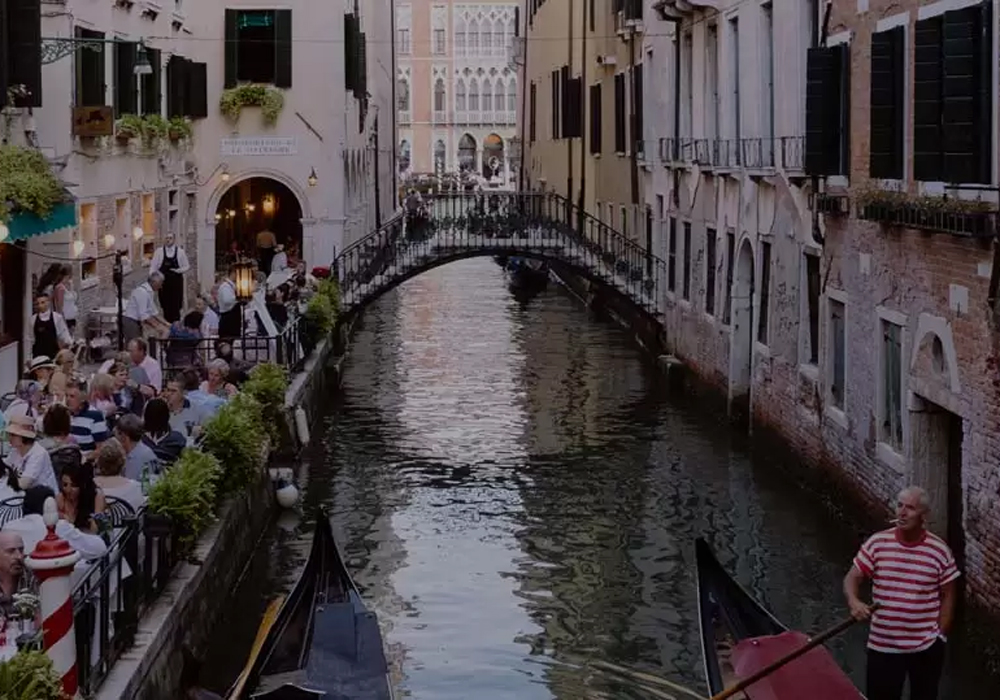
FAQ
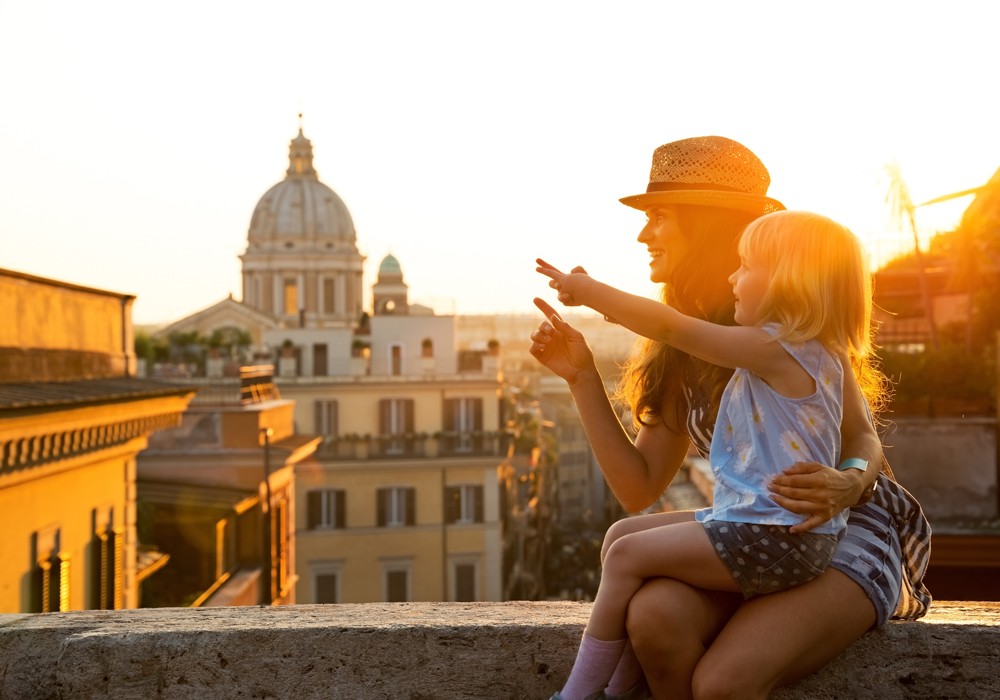
Dragonfly Tours
Who are Dragonfly Tours?
We are a tour operator and DMC with our administrative office in the US (Los Angeles) and our operative office team based in Italy (Rome). At Dragonfly Tours, we are passionate about creating unique travel experiences in Italy.
Our exceptional journeys take you beyond the highlights and into the heart of a destination. We do this by sharing hidden gems with you that are not even mentioned in guidebooks, introducing you to local people you wouldn’t otherwise meet, and showing you customs and traditions, you may not have discovered by yourself. Our experts focus on details like route planning to make the most efficient use of your time, where to shop for the best prices, what parts of a city to avoid; the little things that only someone who LIVES there would know. We only build custom packages using custom trip planning to ensure you have a unique “Italian experience” that you will remember for a lifetime.
Why should I trust your company?
We are accredited by the BBB (Better Business Bureau), we are registered as a Seller of Travel in the State of California, holding a Trust Bank Account with Bank of America; money deposited for your trip will be secured and stored until your departure from Italy, immediately after all our suppliers have been settled. Last but not the least, feel free to browse some of the reviews written by our satisfied customers on TripAdvisor.
Do you cover the whole country?
Yes, from north to south including the islands: (Dolomites, the Lakes, Venice, Florence and Tuscany, Rome and the Vatican, Cinque Terre, Amalfi Coast and Capri, Apulia and Matera, Sicily, Sardinia, and Milan…to name a few!)
Do you offer group tours?
No, we do not sell pre-scheduled group tours. As one would expect, group tours usually offer the cheapest option for those on a tight budget. Economies of scale are the main factor at play here, allowing travelers to benefit from the savings associated with sharing resources.
One thing to bear in mind is that this does depend on the number of people in your party. For example, those traveling in a group of friends or family may find that the cost of a private tour can work out the same or even cheaper when compared with the per-person cost of a group tour.
Do you work with travel agents?
We have been working with most US travel agency/ICs for years. Please send us an email with your agency name, phone number, and Industry ID number and we will send you details of how we can work together.
What types of vacations do you offer?
We offer a wide range of vacations, almost every type of holiday on offer in Italy: honeymoons, family vacations, gourmet trips, celebration trips, anniversary vacations, pre/post cruise trips, luxury packages, all on a private basis.
Will I be traveling with other people?
No, yours will be a private tour with your own drivers or guides. Everything will be tailored on you! Nobody will take part in your tour except you and your family or friends.
What is a private tour vacation?
Personalized private tours give you total freedom and flexibility. The tour itinerary and schedule are entirely focused and planned around you. Everything is catered to your tastes, including places to visit, things to do, types of activities you’ll enjoy and even the menu. One of the best things about a private custom tour of Italy is that during your planning and from the moment you land, you’ll have local experts dedicated to you, your travel companions, and your needs.
With a personal tour, there are no rigid pre-planned itineraries that you need to accommodate, although we do offer a suggested route to get you started if you don’t already have something in mind. While group tours rely on buses filled with other travelers, private tours allow you to choose who will accompany you on your trip. Whether traveling alone, with family or friends you can enjoy more privacy and comfort. Having your own personal guide and transportation provides you with that extra special care and attention. This is especially helpful if you are traveling with young children, elderly relatives, disabled travelers, those with medical conditions, special needs, or mobility issues. With a private tour with Dragonfly tours, you will have your travel expert 24/7 at your disposal while traveling, something truly priceless!
What is a customized vacation?
Custom trip planning is what we specialize in. Our tour designers (experienced and only Italian) will work with you to create the ideal trip for you based on your interests and budget. Knowledge and contacts are everything when it comes to coordinating a successful customized trip. We are based in Italy, and we handle all the details, from the most basic to the most personalized requests. You will always have the same people working with you, from your initial enquiry until you leave Italy after you trip.
Can you give me a breakdown of my package price?
Because we sell trips as a “package,” our policy is to provide you a price for the package as a total—we do not itemize. Our negotiated rates with suppliers are confidential so we are not able to disclose these. We always check our prices and make sure they are comparable to the published rates online and we make sure the value for what you are paying is very high. Our goal is to provide our customers with a high level of personalized service and offer a level of knowledge about Italy unmatched by any other company.
How do you choose your suppliers? Should I trust them?
We have personally selected them from across the country. Most have been Dragonfly Tours suppliers since the very beginning and we know each one of them personally, which is why we always create the perfect match for our clients.
Are your private guides and drivers licensed and do they speak English?
Yes. Our guides and drivers are personally picked by us, so we know them well. They are fluent in English. All guides have gone through extensive training in their specialized areas and are licensed with the local guide associations, which are strictly regulated by Italian tourism laws. Our all drivers have special tourism licenses for their vehicles.
Will the guide pick us up from our hotel?
All our guides and drivers will meet you in your hotel lobby, avoiding any potential issues when it comes to finding them in the city or searching for them at a crowded meeting point.
What kinds of vehicles are used for private tours?
Our drivers are constantly upgrading their vehicles. A typical sedan used for up to 3 people is a Mercedes type E model or Mercedes S model. A typical minivan used for groups of up to 8 people is a Mercedes Viano, Sprinter, or similar.
For groups of over 8 people minibuses or full buses are used depending on the size of the group. With groups larger than 8 we often include an English-speaking escort for all transfers and excursions.
What kind of dining can I expect on your tours?
Each of our tours offers a culinary journey into renowned local cuisine and traditional dishes that are harmoniously paired with local, organic, or award-winning wines. On every tour we visit an array of establishments: from small family-owned restaurants to world-class kitchens.
Do you get to skip the line on all your tours?
Yes! We have skip-the-line access on all our tours. Sometimes there may be a wait for security to enter sites such as the Colosseum or the Vatican City.
How long before I hear back from you?
We contact you as soon as possible. We aim to reach every contact we receive within the first 24 hours or at the specified time set by you. Sometimes, during high season, we may be delayed slightly, but be assured, we respond to every message.
Will you book my air travel?
Unfortunately, we are not airfare consolidators or air ticket booking agents. Our expertise is with land services only and unique experiences. We can provide you with trusted contacts in the US if you need help planning your flights.
Where can I read reviews about your company?
Feel free to read our 99.5% excellent TripAdvisor reviews.
How much does a vacation with you cost?
Private travel pricing isn’t a one size fits all. A good starting point for a trip to Italy is 450 euros per travel day per person including accommodation, ground transportation, and sightseeing for 4-star hotels. This is of course a starting point and, based on the level of your hotels and services, this per day cost can go up or down. We are normally able to accommodate 95% of the requests we receive! Private Italy tours need not be extravagant, although of course we all love a little luxury. Whether you’re looking for premium experiences like driving a Lamborghini through the streets of Modena or would prefer a rustic beach lunch and the simple pleasure of a dip in the sea, find a company that can customize your tour in keeping with your budget. Costs are driven by the class of hotel and distance traveled, so if you need to work to a set budget you can make amendments as necessary. Tell us your budget and we will keep within it.
What does the tour cost include?
Our packages always include hotel accommodation (4/5-star luxury hotels only), private English-speaking drivers, private licensed English-speaking guides, skip-the-line entrance tickets, unique experiences, food and wine activities, villa rentals… all the ground services you need in Italy, from north to south, including the islands.
What if I find my own hotel, will you book it for me?
Sorry, but no. We only book properties we have had inspected. This gives us a level of quality we can depend upon. You may find a cheaper hotel online, but we have working relationships with our hotels and know all the details that you won’t find on the website, such as how far from the hotel the sights are located, which rooms are best, etc. Our hotels treat our clients better because we work directly with them to ensure the quality of their stay. We have thousands of inspected properties we work with across Italy, more than 150 at discounted contracted rates, so it is more than likely we will be able to offer you a better option than you can find online. We can build ground service packages without hotels, but we are unable to book them on your behal
We have points with a hotel chain, can we use your services if we book hotels with our points?
We are happy to work with clients who want to use their own hotels to use points or for other reasons. However, we are unable to vouch for or be responsible for any problems with hotels not contracted by us directly. For logistical reasons we also need to know where these hotels are to give you a proper quotation for other services. Some tours may not be possible or could cost more if your hotel accommodation is located further away from your tour departure point.
How does the booking process work?
Once you have contacted us, your tour designer will work with you to create an itinerary that suits your needs and budget. Based on the complexity of the vacation package you will receive the first quote and itinerary in 24/48 hours. Once you approve the program and confirm your dates, we require a 20% deposit to hold space in the hotels and at this point we will book the accommodations. The final payment is due 45 days prior to your departure. Travel documents and vouchers will be sent to you approximately two to three weeks prior to your departure with all the necessary contact information.
What is your payment policy?
20% non-refundable deposit at the time of the booking; balance 45 days prior the tour departure date.
What payment methods do you accept?
- Wire Transfer
- Bank Draft or Cheque
- Credit Card (we accept Visa, American Express, or Mastercard)
What is your cancellation or amendment policy?
Cancelations: In the event of a cancelation, this must be received in writing to [email protected] and will be calculated based on Italy time. (CET)
Notice period:
Up to 46 days prior to departure 20% is due (total amount of deposit)
- From 45 to 30 days prior to departure 50% of the total amount is due
- From 29 to arrival day or no show 100% of the total amount is due.
- Refunds on unused services: Our tours are sold as a package and therefore we are unable refund a client for services that they decide not to utilize.
Do you offer travel insurance? Is it important to have it?
We strongly recommend travel insurance to protect your investment, which for a trip to Italy can be substantial. Travel insurance gives you peace of mind in safeguarding your investment in the event of a cancelation prior to or during your trip. We suggest you consider a TRAVEL GUARD COVERAGE PLAN. These industry-leading, comprehensive travel insurance plans are distributed by more than 12,000 travel companies through virtually every distribution channel in the travel industry. Travel Guard offers insurance plans designed to cover travelers worldwide. Plans can include valuable medical coverage, trip interruption, emergency travel services, and more.
Your prices are in euros. How do you calculate the final trip price in US or Canadian dollars?
To give you the best price we quote in euros if you are traveling to an EU country such as Italy. Quoting in euros gives you the best price and exchange rate. Companies who quote in US dollars for European travel are marking up the price to compensate for the exchange rate. The USD or CAD amount will be calculated for the deposit at the applicable current exchange rate as per our currency broker. The balance is due on or before 45 days prior to the start of the program. The USD or CAD amount for the balance will be calculated at current exchange rates at the time of your payment. NO EXCHANGE RATE FEE WILL BE APPLIED.
What do I do if I have a problem or emergency?
If you have a problem, you must report it to us within 24 hours so that we can have our local contact work with you to correct the problem. We can’t fix it if you don’t tell us immediately! We are in constant contact with our supplier and talk to them the day before and after the service, so we always know what is happening on the ground. For a health emergency please contact medical services, police, or fire by dialing 113 (within Italy).
When will I get my final travel documents?
Your final travel documents arrive between one and two weeks before you depart. We do it this way so that any last-minute information about your trip or destination can be added and given to you before you depart. We want to make sure you have the most up-to-date information before you go.
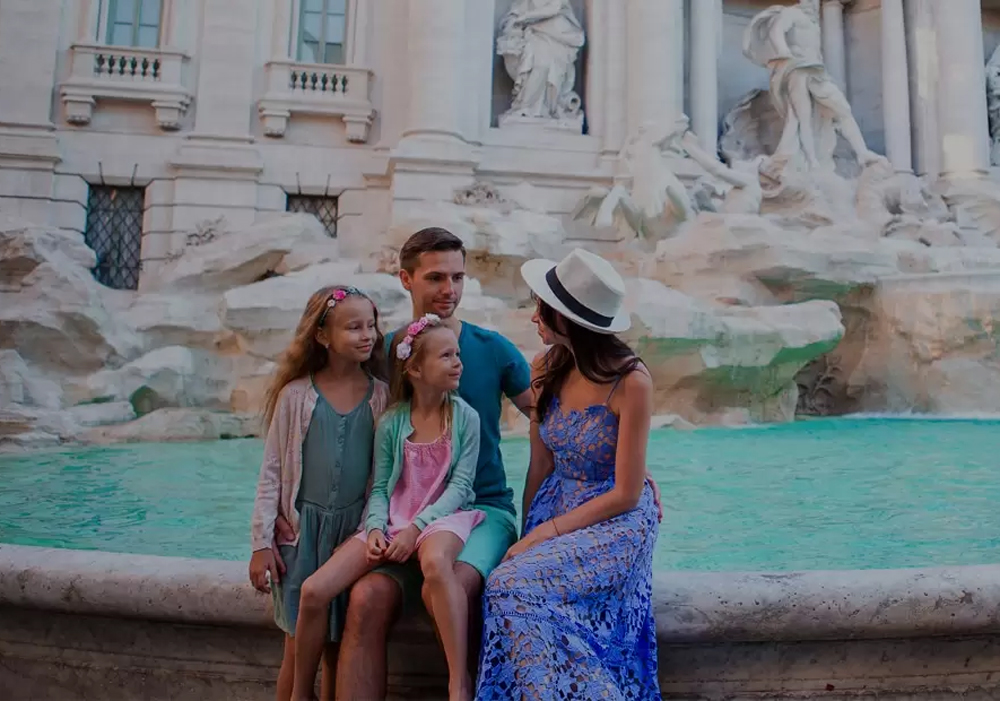
Family & Kids in Italy
Is Italy good for a family vacation?
Italy is a great family destination, offering kid-friendly attractions, food, and accommodations. Children are an important part of family life in Italy and are usually welcomed with great affection by local Italians.
Is it safe to travel to Italy with kids?
Yes, it is safe to travel to Italy with kids. Taking into consideration the small adjustments that always need to be made when traveling with children, you should have no other concerns.
Is there Disney in Italy?
There are no Disney resort or theme park facilities in Italy.
Which part of Italy is best for families?
You can visit anywhere in Italy as a family. Nowhere is off limits, but it may be sensible to plan your trip so that it combines a good balance of sightseeing and relaxation/beach time so as not to overwhelm your children.
Is Sorrento child friendly?
Sorrento is definitely a child-friendly destination. Although most access to the sea is via bathing rocks rather than sandy beaches, children will love the relaxed atmosphere in Sorrento and the opportunity to soak up new experiences, such as watching the local fishermen land their catch, choosing from dozens of new gelato flavors, or catching the tourist train.
What to visit in Naples Italy with a baby?
Children are welcome everywhere in Italy. Do not count on getting a high chair in restaurants, so take your stroller with you. Naples is a relatively small city to walk around so you will always be within reach of your hotel if you need to pop back. Don’t miss a walk along the seafront.
Can kids climb the Duomo in Florence?
Kids over 6 are allowed to climb the Duomo. Be warned that there are 463 steps, however! If your kids are good climbers, the view from the top is well worth it!
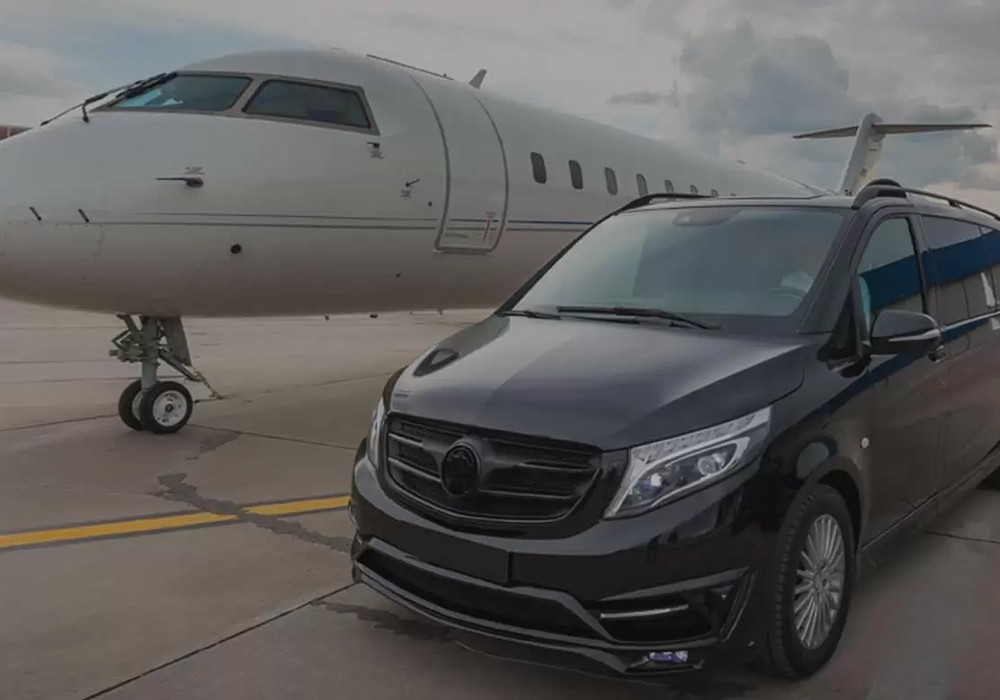
Flights & Airports in Italy
What are the main airports in Italy?
When planning your trip to Italy, consider the airports mentioned below. These include the main arrival and departure airports that are within easy reach of the places you may want to visit.
- Leonardo da Vinci International Airport (FCO), Rome
- Marco Polo Airport (VCE), Venice
- Malpensa International Airport (MXP), Milan
- Pisa Galileo Galilei Airport (PSA), Pisa
- Florence Peretola Airport (FLR), Florence
- Naples International Airport (NAP), Naples
How many airports are there in Italy?
Italy is home to a total of 77 airports. Not all of these serve international destinations and some of those that do only serve other European airports.
How many international airports are there in Italy?
There are 9 major international airports in Italy, serving the major cities.
What is Italy's busiest airport?
Leonardo da Vinci International Airport (FCO), Rome is the busiest airport in Italy.
How many hours does it take to fly to Italy?
It takes roughly 8 hours to fly from New York to Rome, for example. From Chicago, it takes about 11 hours and 12 hours from Los Angeles.
Are Italian airlines good?
Passenger airlines in Italy are required to have an Air Operator Certificate issued by the Civil Aviation Authority of Italy. Various passenger reviews of the customer service provided by Italian airlines are available online.
How long will it take to fly to Italy from the US?
Depending on which North American city you fly from, it can take as little as six hours. Italy is six hours ahead of the East coast and nine hours ahead of the West coast. Departing from anywhere in the US, you’ll be in Italy the next day and coming back home, you’ll return the same say that you left!
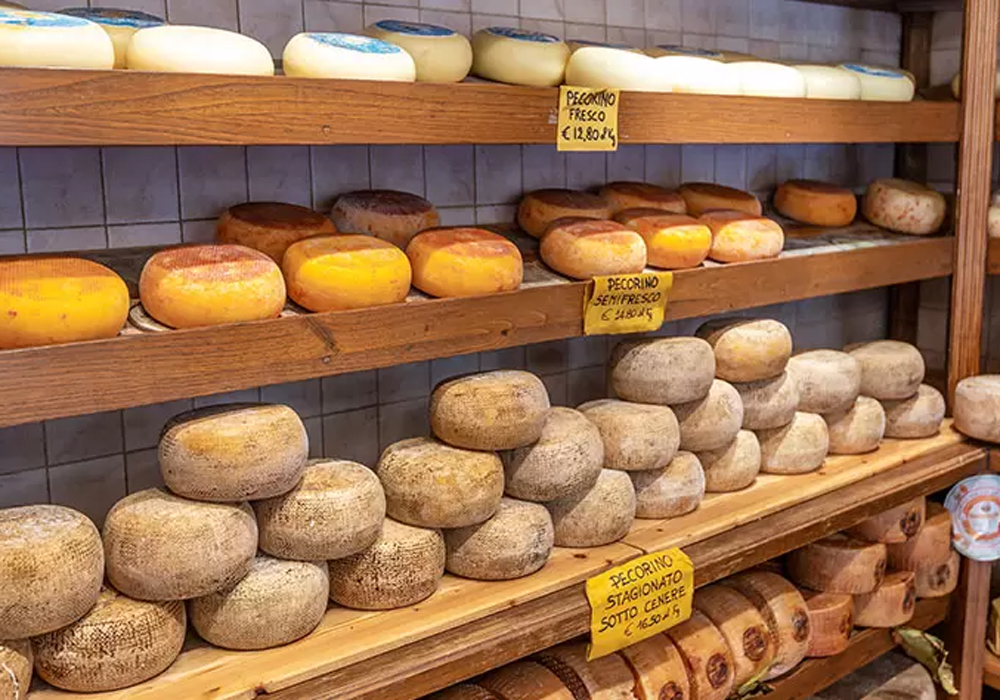
Foods & Tips in Italy
Do you tip in Italy?
There are no strict rules about tipping in Italy as hospitality workers are paid a full wage.
Is tipping mandatory in Italy?
Tipping is not mandatory in Italy. Leaving a tip is a gesture of courtesy to show that you appreciated the service given to you. Most Italians would be happy leaving the change; some would leave 10% for a large group, but nothing more than that is required.
What is the main meal in Italy?
In Italian society lunch is often the bigger meal, but it is also normal to eat your main meal in the evening at a restaurant.
What time is lunch in Italy?
In Italy lunch is usually served and eaten between 12.30pm and 2.30pm.
What time is dinner in Italy?
Dinner time in Italy tends to get later depending on the further south you go. Dinner is usually eaten between 8pm and 10pm, depending on the location and the time of year. Italians tend to eat later in summer.
What food must you try in Italy?
Italy has a rich culinary history with regional specialties and seasonal delicacies in which to indulge. This list acts as an easy guide for what to eat and where:
- Pizza in Naples
- Lasagna in Emilia-Romagna
- Ribollita in Tuscany
- Cacio e Pepe in Rome
- Bottarga in Sicily
- Florentine Steak in Florence
- Polenta in Venice
- Ossobuco in Milan
Our Italy Food Tours provide inspiration to guide you to famous Italian cuisine or specific gastronomic masterpieces, specialized cooking classes, or insider street-food experiences.
Can you drink the tap water in Italy?
It is safe to drink the tap water in Italy unless there are signs to the contrary. “Acqua non potabile” is Italian for water that is unsafe to drink.
What do Italians eat for breakfast?
Italians tend to eat a relatively small amount of sweet things for breakfast: croissants, brioches, cannoli, biscuits, cakes, etc. This is usually accompanied by a strong coffee at a local bar. There is no tradition of eating big breakfasts of eggs, meats, cheeses, etc. in Italy although most international hotels offer some if not all of these options for foreign guests.

Honeymoon in Italy
Is Italy good for a honeymoon?
Italy makes a wonderful destination for a honeymoon as it is home to countless romantic destinations, from its cities to beaches and islands.
What part of Italy is best for a honeymoon?
It is very hard to pick just one! All of the major cities make great honeymoon destinations, as do the beaches of the south. You may want to spend your honeymoon by a Venetian canal or exploring small hilltop towns across rural Sicily – all you have to do is choose!
Is Italy expensive for a honeymoon?
At Dragonfly Tours we can tailormake your trip to fit your budget. There are plenty of unique romantic experiences to be enjoyed on honeymoon in Italy, from once-in-a-lifetime upscale experiences to money-can’t-buy moments. Our expertise is what will help you design your perfect Italian honeymoon.
How much does an Amalfi Coast honeymoon cost?
An Amalfi Coast honeymoon can be designed to suit all budgets. As a rule of thumb, we suggest a figure of 450 euros per person per night, including accommodation, as a starting point, but we are happy to work with you to find your perfect trip.
What is the most romantic place in Italy?
Venice is hard to beat as a romantic location, but even the city on the water can be busy at certain times of year. Tuscany is also a very romantic region at any time of year, as are several parts of the Italian coastline, from the Cinque Terre to the Amalfi Coast and Capri.
Is Rome good for a honeymoon?
Rome is a great honeymoon destination, with plenty of romantic options around every corner. Some of the most intense sightseeing experiences can be combined with dinner at a quiet trattoria in Trastevere, laughing as you make pizza together, or strolling hand in hand through the Villa Borghese gardens.
Which Italian island is a popular honeymoon spot?
In terms of islands, Capri is a popular honeymoon spot for its stunning views, luxury hotels, and unique experiences. It also boasts wonderful restaurants serving everything from local cuisine to Michelin-starred delicacies.
What are the best honeymoon itineraries in Italy?
For a honeymoon we recommend combining a city break with relaxing couples time at a quieter more scenic destination in the countryside or at the beach. We will work with you to find the right itinerary for you and your partner.
How do you say honeymoon in Italian?
There are two ways to say honeymoon in Italy: viaggio di nozze (literally, wedding trip) and luna di miele (literally, honeymoon).
When is the best time for a honeymoon in Italy?
Unless you want to spend your honeymoon on the ski slopes, spring, summer, and fall make great times for a honeymoon in Italy. At any time of year, we can help you plan activities and destinations to suit your needs.
Is a honeymoon in Italy with a baby a good idea?
With a little advanced planning, there is no reason why you can’t bring your baby on honeymoon to Italy with you. Children are welcomed all over the country.
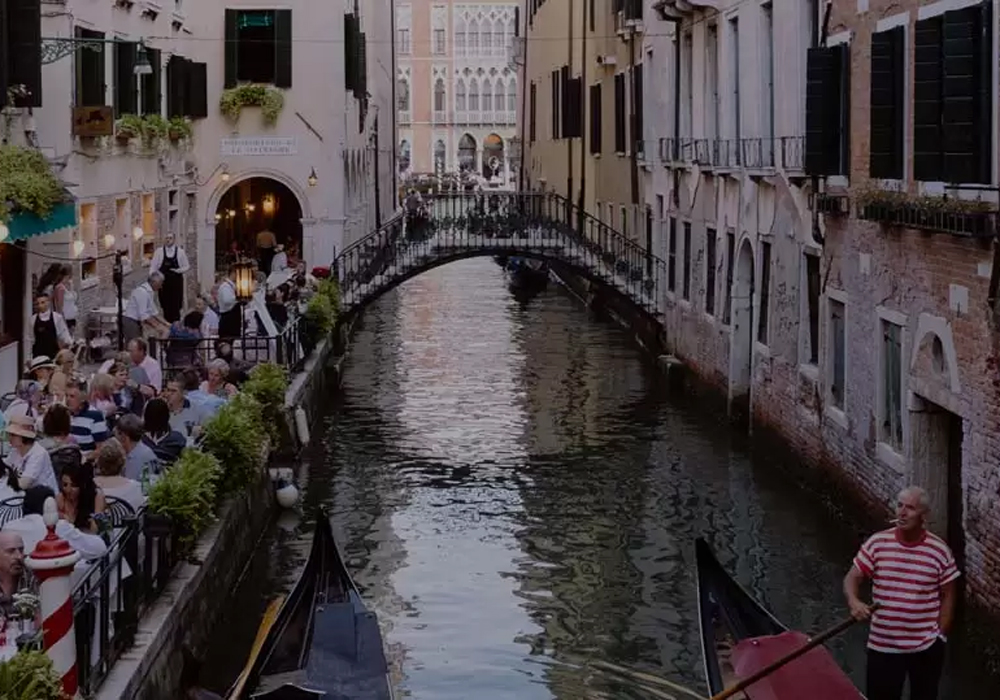
Length of trip
How many days should you spend in Italy?
There is so much to see in Italy it could take you a lifetime! There will always be choices to be made. Generally speaking, a minimum of a week is a sensible place to start to give you the chance to see some of the major sights and cities without spending all your time on the road. With 10 days to two weeks at your disposal, you can visit at a more leisurely pace and include sights that are more off the beaten track.
Is 3 days in Florence enough?
Three days is just about enough to see the main sights, including a visit to the world-famous Uffizi gallery. There is plenty to see though, not to mention if you decide to take day trips into the Tuscan countryside or to visit the elegant city of Siena, so the more time you have the better.
Is one week in Rome too much?
You can never have too long in Rome! There is so much to see and do, you will never be bored and you can visit the main sights at a more leisurely pace. With more time at your disposal, you could also take a day trip out to Tivoli, for example, to visit the stunning Villa d’Este gardens.
Is 3 days in Venice enough?
Three days in Venice will give you a feel for this unique city and plenty of time to wander around. Having said that, with a couple of extra days, you could get a boat out to some of the smaller islands, such as Burano and Torcello, or take a trip inland to the beautiful cities of Padua and Vicenza.
What is the best 7-day itinerary in Italy?
With only seven days at your disposal, it makes sense to base yourself in two of Italy’s major cities rather than trying to cover too much ground. Florence and Venice make a nice combination that highlights some of the country’s best art and architecture, not to mention food! You may prefer to combine Rome and Florence, a snapshot of two of the key periods in Italy’s long history, focusing on Ancient Rome and the Renaissance.
What is the best 8-day itinerary in Italy?
With eight days, you could either try to fit in three cities, although it would be a rush, or base yourself in two cities and include a couple of day trips to really get the feel of each region. How about Rome with a day trip to Tivoli and Florence with a day trip to Siena?
What is the best 10-day itinerary in Italy?
A 10-day itinerary makes it possible to visit three of the major cities if you are keen to maximize your sightseeing time—Rome, Florence, and Venice are possible in 10 days. Having said that, you may prefer to combine two of the cities with somewhere a bit slower paced to allow you to recharge your batteries in between sightseeing—examples include Rome, Tuscany, and Umbria over 10 days or the Cinque Terre, Lucca, Florence, and Tuscany.
What is the best 12-day itinerary in Italy?
Twelve days in Italy gives you plenty of time to combine city sightseeing with skiing, if you’re visiting in winter, or some time at the beach in summer. Why not start in Rome before traveling south to Naples to visit one of Italy’s most distinctive cities before finishing up with a few days relaxing in the stunning surroundings of the Amalfi Coast?
What is the best 14-day itinerary in Italy?
A 14-day itinerary in Italy allows you time to cover lots of ground and visit both the north and south of the country. Starting with Venice in the north will give you the chance to get acclimatized before heading south into Tuscany, with a few nights in the ultimate art city of Florence. From there, Rome could be your next stop, where you even have time for a day trip to the beach at Ostia or perhaps to the unique Villa d’Este gardens in Tivoli. Once you’ve soaked up the sights of Rome, carry on southward to the Amalfi Coast before finishing your trip on the beautiful island of Capri.
What is the best 21-day itinerary in Italy?
Twenty-one days will really allow you to take your time and build in a few days relaxing between the main sightseeing cities. You will also have the opportunity to visit both the north and south of Italy and perhaps even include a hop to one of the islands, rounding off your visit with a couple of days on a secluded Sicilian beach before flying home, for example.
What is the best 30-day itinerary in Italy?
A month to spend touring Italy is an enviable luxury! As well as visiting the major cities, spending time in both the north and south of the country, and a few days relaxing on the beach, you also have plenty of time to build in some memorable experiences, such as visiting local vineyards, taking a tour of the Ferrari factory in Maranello, attending a big sports event or a concert.
What is the best 10-day itinerary in Southern Italy?
Southern Italy has a lot to offer, from the vibrant city of Naples and the nearby preserved Roman city of Pompeii to the stunning scenery of the Amalfi Coast. With 10 days at your disposal, you will have the chance to visit these and more, including a guided tour of the vast Royal Palace in Caserta and a chance to take a lemon-based cooking class in the picturesque town of Sorrento.
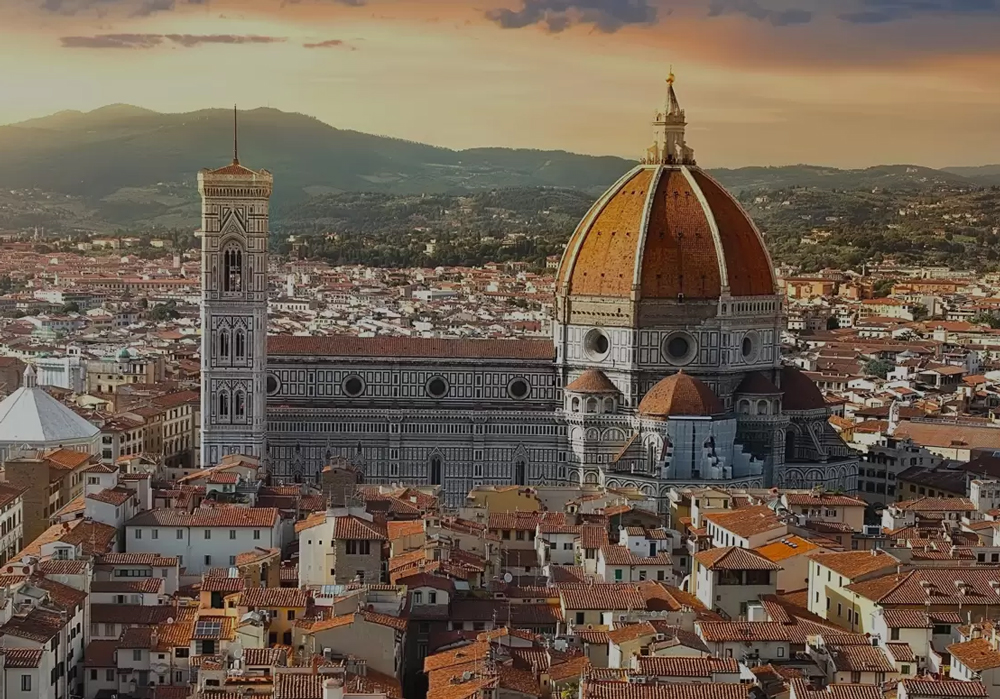
Luggage in Italy
What can you not bring to Italy?
No weapons, explosives, or flammable items are allowed onboard aircraft and cannot be taken into Italy. Liquids must be smaller than 100ml or 3.4 ounces to be taken in your carry-on luggage.
What kind of bag should I bring to Italy?
We recommend bringing a sturdy suitcase with wheels and a medium-sized carry-on bag or backpack. You may also need a smaller handbag/city bag for day-to-day sightseeing.
What size suitcase do I need for Europe?
Please refer to your airline for luggage size restrictions. Remember that hotel rooms tend to be smaller in Europe than in the US and large suitcases will take up extra space. Although they may not be the same brands, you can get almost anything you may need once in Italy so there is no need to be concerned about forgetting anything.
How much liquid can you bring on a plane to Italy?
You are allowed to take liquids in 3.4-ounce containers or smaller in your carry-on luggage. Anything larger needs to go into your checked luggage.
Can you take food to Italy in your carry-on luggage?
Meat, dairy products, fruit, and vegetables cannot be taken into Italy if you are traveling from outside the European Union.
What do you need to declare at customs in Italy?
For travelers arriving from the US, or anywhere outside the EU, Duty Free allowances of 200 cigarettes or 50 cigars, 2 liters of table wine or 1 liter of alcohol apply. Anything else should be declared.
Are Italian customs strict?
Like any country, Italy takes the protection of its borders seriously and we recommend complying closely with the regulations in force.
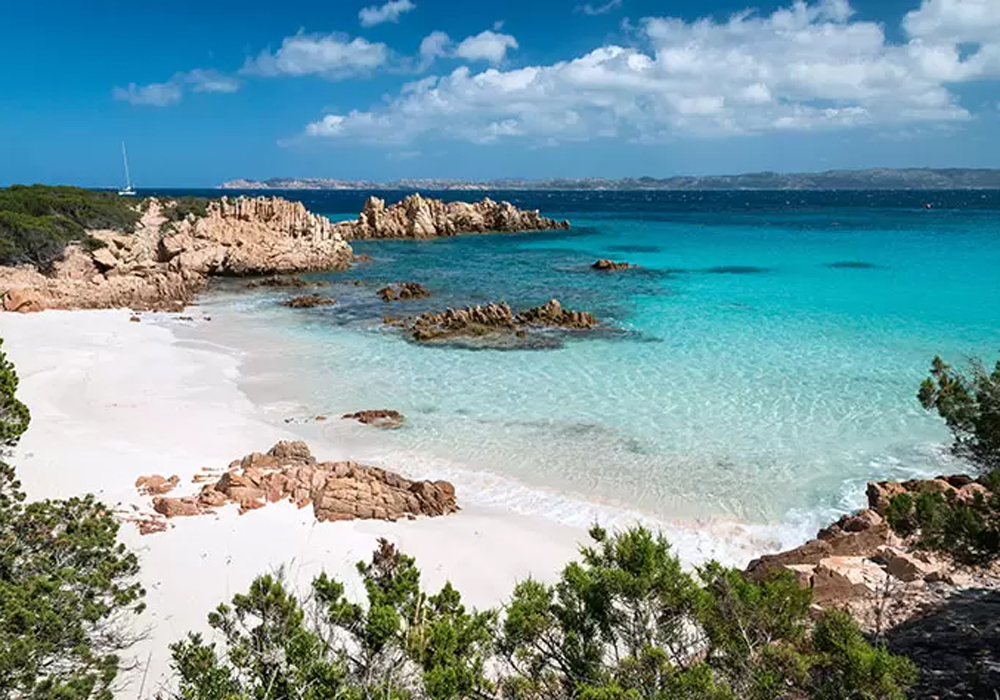
Seaside & Beaches in Italy
What is the best beach in Italy?
It’s not easy to pick one when there are so many to choose from! On the mainland, one of the best beaches in Italy can be found in Polignano a Mare in Puglia. Both Sicily and Sardinia also boast stunning beaches, such as the unique beach at the Scala dei Turchi near the Greek temples of Agrigento in Sicily and Lido di Orrí in Sardinia which stretches for over 2 miles!
Where is the clearest water in Italy?
Some of the clearest water in Italy can be found on the islands of Sardinia and Sicily. The Calabria region in the toe of Italy is also home to some stunning clearwater beaches, such as those around Tropea.
What city has the best beach in Italy? What is the most beautiful coastal town in Italy?
The most beautiful beaches in Italy aren’t necessarily in the most beautiful coastal towns. Examples of some of Italy’s most stunning coastal towns include Positano on the Amalfi Coast, Tropea in Calabria, Polignano a Mare in Puglia or, further north, Vernazza and Manarola, both in the Cinque Terre.
Are there white sand beaches in Italy?
Yes, there are white sand beaches in Italy. Many of these are in the islands of Sicily and Sardinia. For example, we recommend the beach at Mondello, just outside Palermo, and beaches in Sardinia along the Costa Smeralda, or Emerald Coast. The beaches around Follonica in Tuscany, overlooking the island of Elba, are also famed for their sand.
Can you swim in Lake Como?
Yes, you can swim in Lake Como although we recommend sticking to designated beaches or swimming areas for safety reasons.
Does Como have a beach?
There are various pebble beaches and designated swimming spots around Lake Como. Some hotels also have specially set up sunbathing and swimming decks that provide access to the water.
Which cities in Italy have beaches?
Although swimming in the historical center is forbidden, it is possible to swim and go to the beach in Venice if you catch a boat across to the Lido island. Florence is about an hour from the coast. Rome is within reach of the coast at Ostia, while Naples has some small beaches and is not far from the Amalfi Coast, known for its beautiful beaches.
Does the Amalfi Coast have beaches?
Yes, the Amalfi Coast does have beaches, although most of them are pebbly. The area’s stunning geography means that the cliffs plunge into the sea, making the beaches relatively narrow and the scenery to die for!
What beach is closest to Rome?
The closest beach to Rome can be found in Ostia, about an hour from the capital. Ostia’s accessibility by city transport and large public beach mean that it can get very crowded in summer. If you’re happy to travel a little further to avoid the crowds then try fashionable Fregene or picturesque Sperlonga.
Are beaches in Italy free?
Most beaches in Italy are not free but are divided into private areas with facilities known as stabilimenti. For the cost of a sunbed and umbrella you will get access to the clean private beach area, swimming area, outdoor shower, restrooms, a bar and sometimes a restaurant. Costs vary depending on location, time of year, and time of day. Small free beach areas can be found in between the private sections, but they are usually not as nice and don’t have lifeguards or any of the facilities mentioned above.
What is the best beach in Tuscany?
Some of the best beaches in Tuscany can be found in the Versilia area around Forte dei Marmi and Pietrasanta, both of which offer some public beach access. If you’re traveling with kids, you might want to try the Marina di Grosseto area, famous for the quality of its water and theme parks.
Can I swim in Italy in March?
The average sea temperature in Italy in March is 57F. For most people this is cold for swimming and most Italians would not get in the water at this time of year.
Can you smoke on the beach in Italy?
Smoking on beaches in Italy is only allowed in specially designated areas. Outside these areas you risk a heavy fine.
Can you get married on the beach in Italy?
In Italy, legal weddings can only be performed in town halls or at licensed locations such as hotels or wedding venues.
What is the best beach in Italy for families?
There are family-friendly beaches all over Italy. We particularly recommend the flat and safe white sandy beach at San Vito Lo Capo on the island of Sicily, Cala Brandinchi in Sardinia, which boasts a shallow seabed and crystal-clear water, and Scilla in Calabria, which has a large free beach as well as several resort areas with slides and carousels for kids.
Are there any dog-friendly beaches in Italy?
There are dog-friendly beaches in Italy. We recommend checking with your tour designer or local staff.
What is the beach etiquette in Italy?
Beach etiquette in Italy is relatively relaxed. On public beaches it is illegal to try to hold your spot overnight by leaving any belongings there. Italians tend to live up to their glamorous reputation on the beach, with designer swimwear and sunglasses. It is legal to drink at the beach in Italy. Keep an eye on your neighbors’ belongings and they will do the same for you. Take your garbage with you. Nude sunbathing is not allowed unless you are on a designated nudist beach.
What is the most expensive beach in Italy?
According to a recent survey, the most expensive beach in Italy is Twiga Beach in Marina di Pietrasanta in Tuscany, where you can enjoy the presidential gazebo for 1,000 euros per day! Many of the most expensive beaches in Italy can be found near the luxury resort town of Porto Cervo in Sardinia.
What are the quieter beaches in Italy?
The quietest beaches in Italy can usually be found in nature reserves and do not have any private beach facilities. Sacrificing facilities such as bars and restrooms means fewer people and often more beautiful and secluded spots, especially if they are off the beaten track. We recommend Cala Luna in northern Sardinia and Bagni della Regina Giovanna in Campania. Ask your tour designer to recommend a quiet beach near your destination, particularly if you’re visiting outside the peak high season summer months.
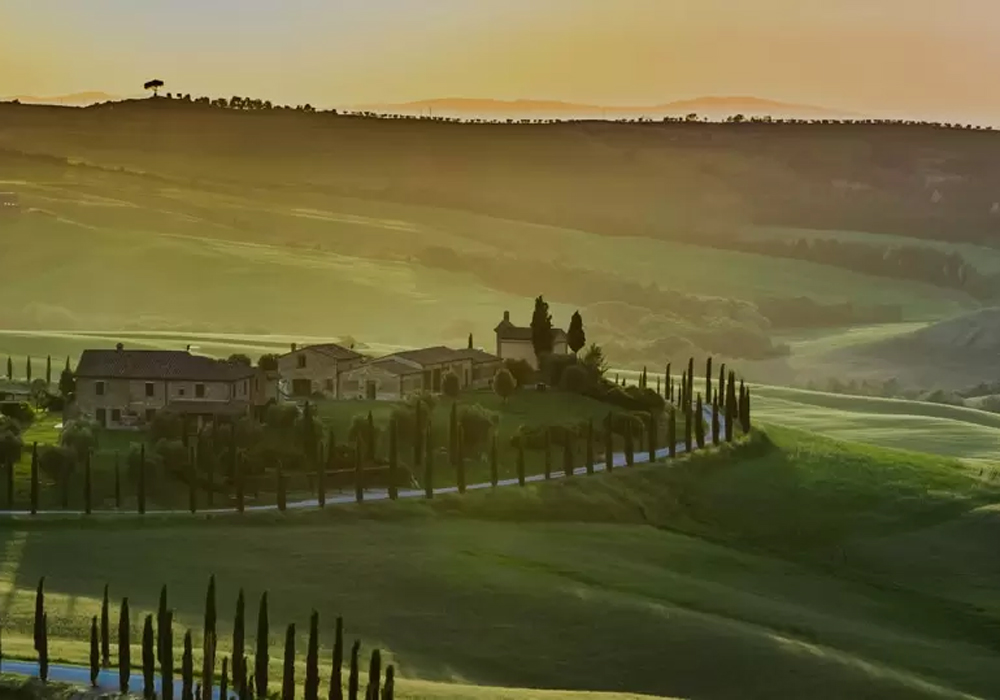
Seasons in Italy
What is the best time to visit Italy? What month is the best to go to Italy?
Italy is a wonderful destination for tourists at any time of year. Of course, you won’t be able to ski in high summer or sit on a beach in the winter, but otherwise you will always be able to find somewhere amazing to visit or something memorable to do at any time of year. Depending on when you want to visit and whether you already have some ideas about where you want to go, our tour designers will help you create a tailormade trip for you.
What type of climate does Italy have?
Italy has a Mediterranean climate, with the north of the country, dominated by the Alps mountains, being colder than the south and islands.
What part of Italy has the best climate?
The climate in Italy varies from north to south—the weather is generally warmer and sunnier the further south you go. It depends what kind of vacation you want and what time of year you are able to travel. It also depends on what kind of trip you want—city sightseeing at the height of summer can be unpleasantly hot and spring or fall might be better options.
What is the weather in Italy by month?
Because Italy is a long country the weather varies from north to south, so it is hard to generalize. In most years, winter includes December, January, and February, spring runs from March to May, the summer months are June, July, and August, and fall beings in September and ends in November. That’s not to say that there aren’t some variations to this year on year.
What is the rainiest month in Italy?
The rainiest month in Italy tends to be November, although this varies depending on the part of the country.
What is the hottest month in Italy?
The hottest month in Italy is usually August, when temperatures can rise into the 100Fs in the south and Sicily.
Is Italy CET or GMT?
Italy has only one time zone – CET.
Is it OK to wear shorts in Italy?
It is OK to wear shorts in Italy. However, some religious buildings, such as St Peter’s Basilica at the Vatican, have a strict dress code and will usually not admit visitors wearing shorts. Wear long pants that day or take them with you and change beforehand. Sometimes it can depend on the official on duty, but you don’t want to risk getting turned away having come all that way.
Is the Amalfi Coast warm in March?
The Amalfi Coast has a Mediterranean climate with hot summers and mild winters. In March it sees lows of 43F and highs around 60F.
Which part of Italy is warmest in March?
The south of Italy is warmest in March—regions such as Puglia, Calabria, Basilicata, Campania, and Sicily.
When are high and low season in Italy? Seasons vary by location. High season typically starts in March and goes through the end of October. Low season is November through mid-to-late March, except holiday weeks. Each year the seasons are based on logical ending points (typically Saturdays) and the dates of the major holidays.

Tours in Italy
What is the best way to tour Italy? What is the best way to travel around Italy?
The best way to tour Italy is undoubtedly with your own private local guide, who can help you really get under the skin of the country and experience things that other tourists miss on their way past. For most trips, it is sensible to combine the major sightseeing cities with more authentic experiences, such as getting out into the countryside to visit vineyards, taste local food, etc. Doing this as a couple or with family rather than with a large group also gives you the chance to explore areas that are off-limits to many visitors. In terms of transport, it is possible to travel by train or to rent a car, but having your own private driver and guide will give you much more flexibility and insight into Italian life and customs, not to mention take away all the stress!
How much does a trip to Italy cost?
A complete tailormade PRIVATE trip to Italy including accommodation/private English-speaking drivers/private guided tours/some unique activities, and assistance during the trip could cost (including planning fees):
- from 200/250USD per person per day in 3* or lower 4* in low season (from November to February, not during Christmas or New Year’s)
- from 300/350USD per person per day in 4* highly rated hotels in low season (from November to February, not during Christmas or New Year’s)
- from 400/600 USD per person per day in 5* hotels in low season (from November to February, not during Christmas or New Year’s)
If you want to travel during high season in Italy (from May to October) add 30/40% to the low season rates.
These prices will be heavily influenced by how you chose to spend your money across accommodation, transportation, food, activities, and entertainment.
How much do tours cost in Italy? How much is a tour to Italy?
Tours in Italy can be found at a range of different prices. Dragonfly Tours offers both luxury tours that include only the best accommodation and unique experiences and more affordable tours that still allow you to really experience Italy but at a cost more in keeping with your budget. If you let your tour designer know roughly what your vacation budget is, they will be able help you plan a customized trip to suit your means.
Do you need a tour guide in Italy? Can you tour Italy on your own?
You do not necessarily need a tour guide in Italy and can visit the country safely on your own, but by doing it this way you risk only scratching the surface and missing out on really getting to know it. Only by turning to experts can you be sure that you’re getting the most out of your trip and really experiencing this magical country that has so much to offer.
Can you spend US dollars in Italy?
No, the currency in Italy is the Euro.
Can I speak English in Italy?
English is widely spoken throughout Italy. Italians always appreciate it if you learn a few words of Italian, but English is understood almost everywhere.
What is the best city to stay in in Italy?
It very much depends on what kind of vacation you want and where you want to visit—the most popular cities to visit in Italy are Venice, Florence, and Rome. Naples, Turin, Bologna, and Milan are also very popular.
What is the most colorful city in Italy?
All Italian cities are colorful in their own way—Venice because it is the city on the water; Rome because it has so much history; Florence for its stunning art and architecture; Naples for its vibrant street life and spectacular natural setting.
Are the Amalfi Coast and the Cinque Terre the same?
No, the Amalfi Coast in in the south-west of Italy, in the Campania region, and the Cinque Terre are in the north-west of Italy, in the Liguria region.
What are the best Italy tours for seniors?
We specialize in making Italy travel for seniors the most comfortable and convenient experience possible, from private transportation and ideal accommodation to private tours at the perfect pace. With a specialist tour operator tailoring your trip, everything will be based around your needs. Taking this into account, any city is Italy is perfect for a vacation for a senior couple/group of friends if they are active and in good shape.
What are the best Italy tours for travelers with disabilities?
Some places in Italy can be challenging for travelers with disabilities. We pay close attention to these particular requirements, considering the cobblestones in Rome, vaporettos (water buses) in Venice, ancient ruins in Pompeii, and the more wheelchair-friendly ruins in Herculeaneum. For example, in Venice bridges are everywhere and are not generally wheelchair accessible, but more than 50% of the city is accessible. We always recommend planning a trip to Italy in advance and using a local expert who will take care of the logistics; it may be more expensive, but it’s definitely worth it.
Can I use my Visa debit card in Italy?
Yes, Visa debit cards are accepted in Italy.
Is it better to use cash or credit in Italy?
Cash is still widely used for small amounts. Credit cards are accepted almost everywhere, however, and are the norm for larger purchases.
How early should I make my travel plans to Italy?
As soon as possible because Italy is very popular! People from all over the world come to enjoy the food, culture, and beauty of Italy. Don’t waste any time! This will also ensure the best airfares and hotel availability. For low-stress planning, 4-6 months is ideal. For a more complex and luxury vacation with VIP experiences and unique reservations, 6 to 10 months is fine, but our team is also able to accommodate last-minute requests even a month beforehand if necessary.
How much travel money should I bring?
On average, you can expect a trip to Italy to cost around €100-150 per day in terms of spending money, depending on your dining choices beyond the meals already included in your tour. Much of this can be paid for by credit card and euros can be withdrawn locally from ATMs, so there is no need to bring it all with you. We recommend bringing some cash for the first few days and in case of emergencies.
Where is the US Embassy in Italy?
Rome Embassy: via Vittorio Veneto 119/A, tel. 064-6741, fax. 064-674-2244, http://italy.usembassy.gov
Is it safe to travel in Italy?
Italy is a very safe country, renowned for its warm, friendly people. Having said that, you must use caution in large cities around tourist areas where tourists can become magnets for pick pockets. Common sense precautions will help you avoid unpleasant situations. While traveling with Dragonfly Tours you will always have a contact based in the country, your tour designer!
Can I use my ATM card in Italy?
ATMs are easy to use. If you have a 4-digit pin number you can access your account from an Italian ATM to withdraw directly in euros.
Can I use my hair dryer, curling iron, etc. in Italy?
In Italy the voltage is 220 (unlike North America, where it is 110) and the sockets are round rather than flat. You can use personal appliances from home in Italy as long as you have a conversion plug and a converter if the appliance is not dual voltage. In Italy you can purchase a kit with everything you need from your local travel shop or in the luggage section of your local department store or at most airports. Please note that most of our hotels have hair dryers in the bathrooms.
What are the must-see cities for a first-time traveler to Italy?
Whatever you choose to see in Italy will be worthwhile and a wonderful experience. However, for a first trip we would strongly suggest you visit the 3 main art cities:
- ROME: ideally 3 days to visit St. Peters, the Vatican & Sistine Chapel, and the Colosseum and Roman Forum.
- FLORENCE: 2 days to see the main sites, 3 days if you want to visit the Uffizi Gallery which is one of the most important museums in the world, or if you want to take an excursion into the countryside.
- VENICE: 2 days to take in the main sites and ambiance.
How do you rent a car in Italy?
When you rent a car in Italy, you’ll need to bring a couple of documents with you.
- Your driver’s license from your home country
- Your ID (passport)
- Credit Card
- International Driver’s Permit (IDP)
The rules and logistics of driving in Italy can be unfamiliar, even to the most seasoned traveler. Traffic has gotten extremely heavy in many parts of Italy such as Rome, Florence, Milan, and the South —particularly the Amalfi Coast, where there is only one road and it can take up to two hours for what should be a 25- to 30-minute drive. Many Italian cities now limit the vehicles allowed into their historic centers; these areas are known as ZTL, or zona a traffico limitato (limited traffic zone). Only those with resident permits or official licenses are permitted to enter; anyone else risks a fine. The signs are small, inconspicuous, and in Italian, of course. Parking is another big problem for foreign drivers; in the big cities it can be chaotic and quite impossible to park, as well in the Tuscan countryside. Italy’s beautiful medieval hill towns weren’t designed with automobile parking in mind! Most of these towns—and certainly those with any kind of tourism—have a car park outside the walls. Be prepared to walk a moderate distance (usually uphill) from these parking lots to the town itself. Don’t expect to drive right up and park in front of the clock tower in Montepulciano. These lots, and most parking spots in urban areas, are not free. The typical speed limits are:
- 130 km/h (80 mph) is the speed limit on highways in Italy,
- 110 km/h (68 mph) is the speed limit on non-major highways outside of major urban areas in Italy,
- 90 km/h (56 mph) is the speed limit on local roads in Italy, and
- 50 km/h (31 mph) is the speed limit in urban areas in Italy.
What are the most popular destinations in Italy?
Here is a list of the seven most popular regions to visit:
- Rome
- Venice
- Amalfi Coast
- Florence and the Tuscan hills
- Cinque Terre
- Lake District
- Sicily
Each destination offers something different for travelers, from ancient Roman ruins to the breathtaking blue coastlines, emerald fields sprinkled with sunflowers, and historic lakeside villas. You can learn more about these destinations in https://www.dragonflytours.net/italian-tour
Are there any local taxis in Italy?
The Italian government recently approved an accommodation tax, which was gradually implemented throughout the country during 2011. Unfortunately, we have no control over this legal requirement. One of the rules about this relatively new tax is that it must be paid in cash by guests directly to the hotel. The full rate is between 1 and 6 euros per person per night and varies according to the time of year (high season/low season, location, type, and classification of the accommodation facility—5-star accommodation requires a higher rate of tax per person per night).
What time can I check into the hotel?
Hotel reservations are in each traveler’s name and your passport will be required at check-in in accordance with Italian law. Check-in is typically after 2:00pm, a national standard, and check-out before 10/11.00am. The hotels we work with usually do their best to accommodate our clients earlier, but this is not guaranteed because it depends on how busy the hotel was the night before and how late previous guests check out (so they have enough time to clean and prepare the rooms). If you would like to have the room ready in the morning as soon as your flight arrives in Italy, you may want to consider booking and paying for the previous night.
